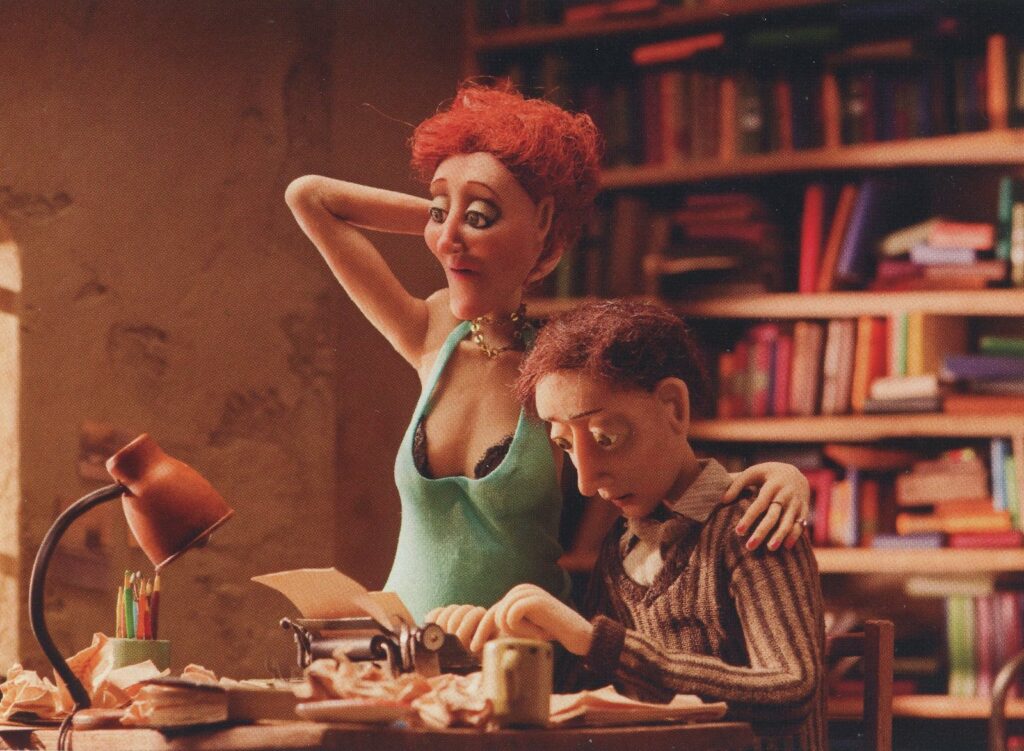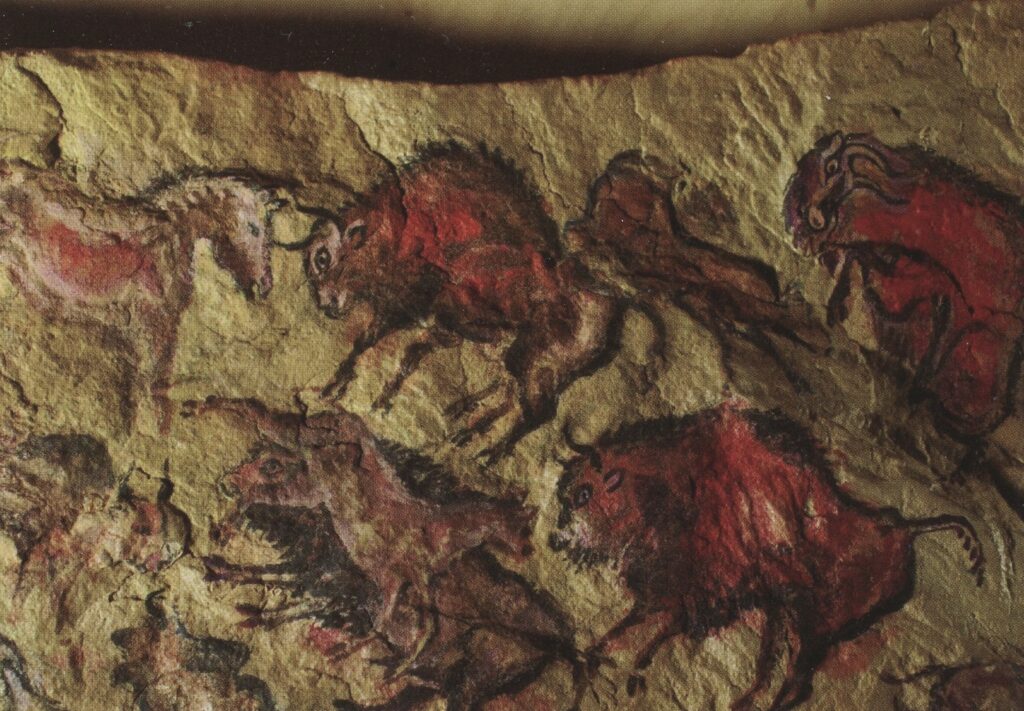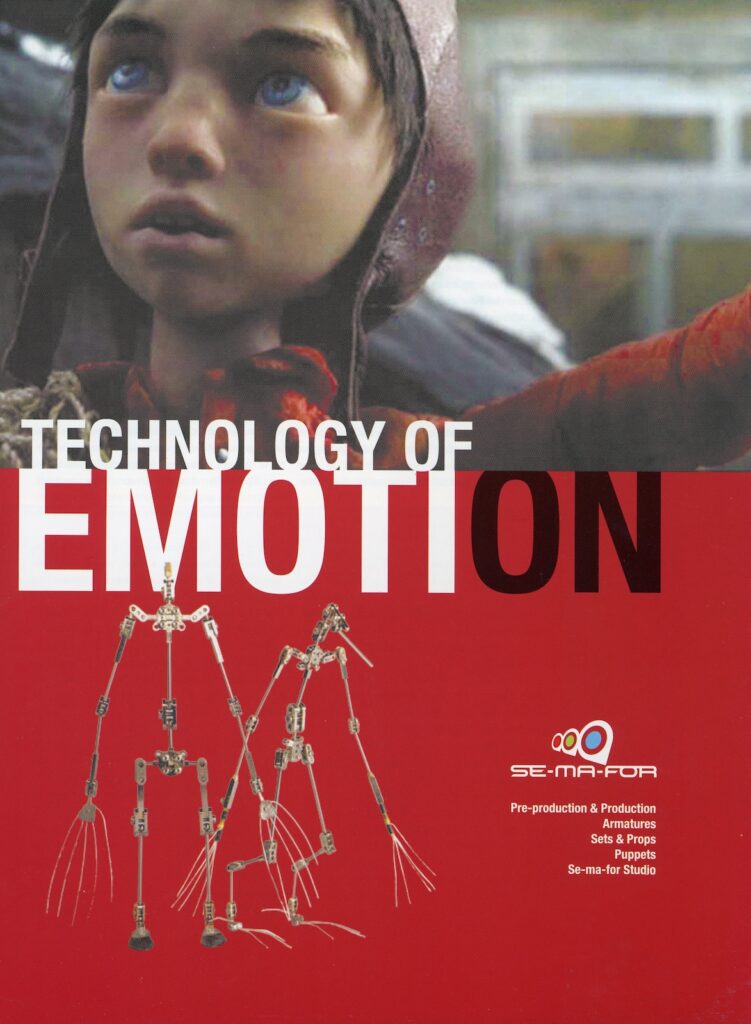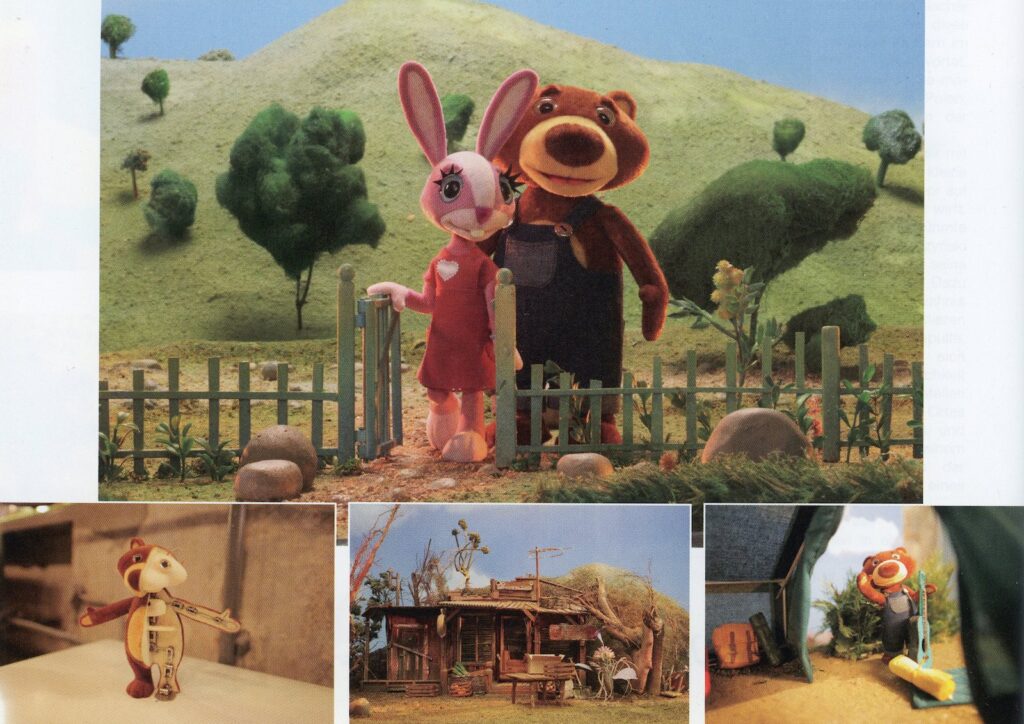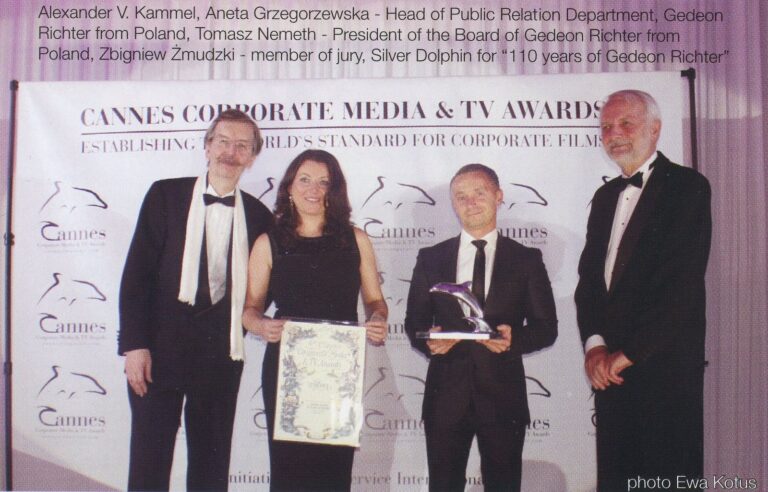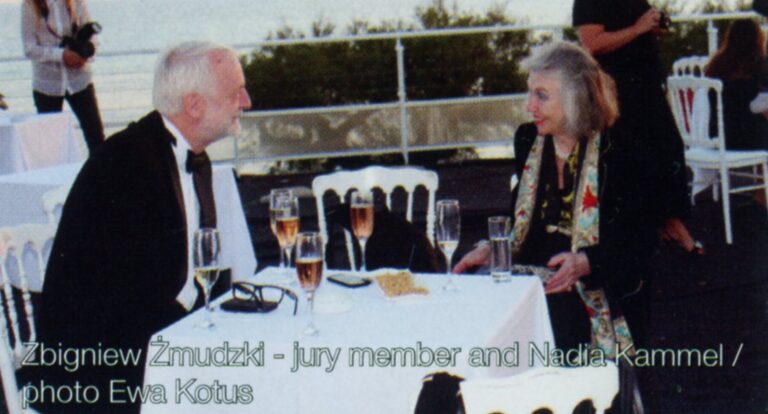ART is important
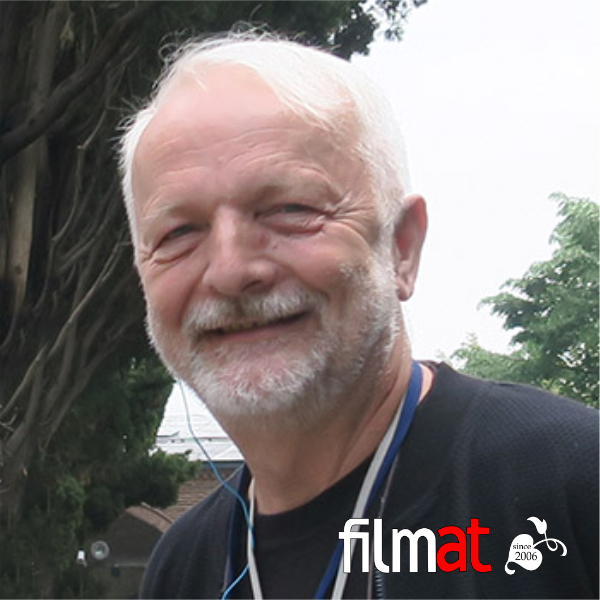
Ewa Kotus: You are a top expert in stop-motion animation because in 2008, as a film producer of the movie “Peter and the Wolf,” you won the highest global award, the Oscar. You founded the Se-ma-for Film Festival, bringing the biggest stars to Poland. You prided yourself on your connections in various countries and continents, which needed to be utilized for us, for Poland, despite the high costs of this endeavor. It is a shame that such potential for our Homeland was wasted due to inappropriate decisions…

Suzie Templeton – British animator, director of the film “Peter & the Wolf”,
her husband Rosto – Duth artist and filmmaker
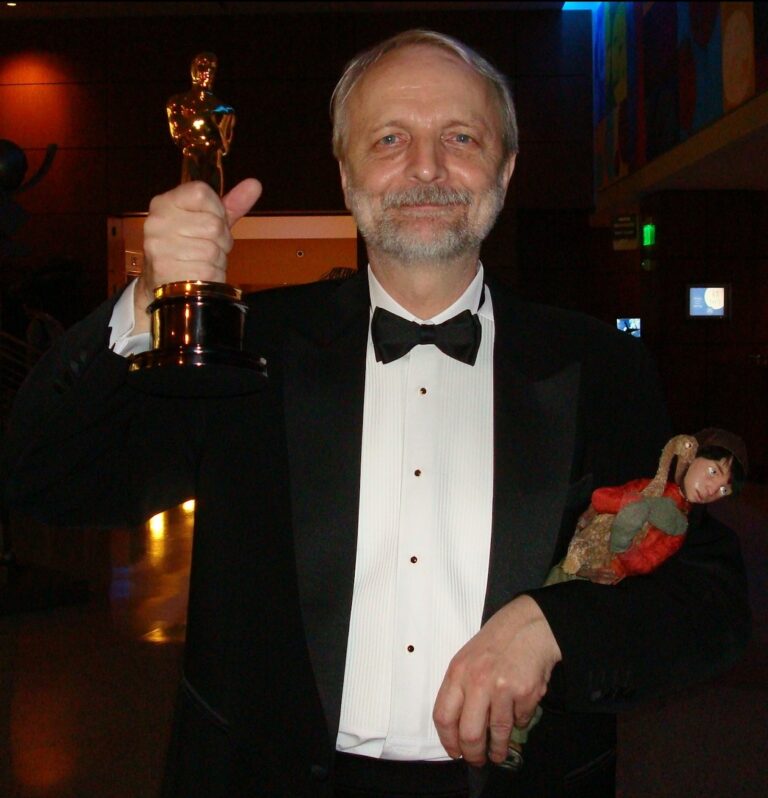
Zbigniew Żmudzki: In 2008, the film Peter and the Wolf, directed by Suzie Templeton, won the Oscar for Best Animated Short Film. It was produced at Se-ma-for, in co-production with the British. I was the Polish producer of the film, and Hugh Welchman represented the British side; he later settled permanently in our country and, among other things, produced famous works like Loving Vincent and the animated version of The Peasants. Films like Peter and the Wolf and, earlier, the Oscar-winning Tango helped make the name Se-ma-for famous worldwide. For this reason, I concluded that it would be a good idea to use this momentum and create an international animated film festival in Łódź. I decided that the competition would have a thematic focus, with the jury evaluating puppet-animated films, which in English is called stop-motion. The festival quickly gained international recognition and was considered the most important global festival for this type of animation. Unfortunately, it did not receive sufficient support from the authorities of the city of Łódź, and despite the fact that special committees appointed by the president highly rated the promotional value of the festival, the funding was very limited. Such festivals serve, among other things, to promote the city in which they are held, and they are usually sponsored by the local government. Due to financial reasons, the Se-ma-for Film Festival ended after four editions. Unfortunately, it is sad to say, but a city that calls itself “Film City” cannot take care of film festivals. In recent years, festivals such as Reanimacja, Se-ma-for Film Festival, Targowa Street Festival, the European Film Forum Cinergia, Transatlantyk, and the most famous Polish festival, Camerimage, have all ceased to exist or moved away.
– Grand Prix Se-Ma-For Film Festival 2013
International Competition
– Grand Prix Se-Ma-For Film Festival 2013
Polish Competition
E.K.: I participated in one edition of the Festival as a juror in the national jury section. It was four wonderful days of meetings and discussions with artists from around the world and screenings of extraordinary films. I remember those films, even though many years have passed, because they were very artistic. The best ones were crafted with incredible precision, it’s hard to believe that so much information about character, lifestyle, origin, and moods could be conveyed through the dolls – in their faces, their structure, their clothing, and the way they moved…
Z.Ż.: One could say that puppet animation is a Polish specialty. The pioneer was Władysław Starewicz, who in 1910 made the world’s first puppet animation film, and it wasn’t just an experiment – the film was actually shown in cinemas. It was titled The Beautiful Lukinida. The story behind the creation of this work is interesting. Starewicz, who lived in Kaunas, Lithuania, received a camera from the Moscow studio Chandžonkow to create film materials from Lithuania. The first materials he shot were about the nature of the Niemen River area. In one film, he intended to show the battles between male stag beetles. However, during filming, the forest was too dark, so he decided to move the shooting to the studio. When he tried to film the battle of live beetles fighting for a female, he found that once the lights were turned on, they froze in place. He then came up with the idea to put the “knights” to sleep. He separated their limbs and horns from their bodies and then reattached them in the right places using thin wires. Starewicz filmed the battle of the males fighting for the female by dividing the movement into individual phases and taking frame-by-frame shots.
Thus, the first stop-motion puppet animation was created. After seeing the developed photos on the screen, he concluded that it would be possible to create a short narrative film using the method he had discovered. He dressed the characters in medieval costumes, built decorations, and filmed a stop-motion story about the battle between knights – beetles – for the hand of a princess – a female beetle named Lukanida. The premiere of The Beautiful Lukanida took place in March 1912 in Moscow.
Later, Starewicz made many more puppet films in Russia and France. Puppet films were also a specialty of my studio, Se-ma-for. The first Polish film produced after World War II, Za króla Krakusa by Zenon Wasilewski, was a puppet film. Such were the series Miś Uszatek, Miś Colargol, Pingwin Pik-Pok, and the most recent film made at Se-ma-for, Flapper and Friends. The idea for Flapper was my creation.
Unfortunately, after my retirement and departure from Se-ma-for, the studio ceased operations. The new president was unable to preserve the studio and the animation museum that existed at the time.
E.K.: You have extensive knowledge about film because after graduating from the Łódź Film School, you became the production manager for many famous Polish feature films and TV series. You’ve therefore learned all the secrets related to film production. You’ve collaborated with many renowned directors. Which one do you remember with the most sentiment?
Z.Ż.: After Film School, I went through all the stages of a production organizer’s career. From production assistant, assistant director, second production manager, production manager, head of production at the Feature Film Studio in Łódź, and later Se-ma-for, to film producer. I remember with great sentiment my first job in 1976 on the film Barwy ochronne by Krzysztof Zanussi. I was first an assistant, and halfway through the shoot, at the director’s request, I moved to the set. Mr. Krzysztof couldn’t quite get along with the first assistant director and asked for a change. For me, this was a new, important task. The assistant director is the person who manages the film crew and extras, organizing their work during the shoot so the director can create the film without any hindrance. My responsibilities included organizing the crew’s trip to the filming location, and then, usually, the director, the cinematographer (Edward Kłosiński), and I would have a short meeting to determine the sequence of tasks, after which I would organize the set, while the director and cinematographer would work on the artistic details of the shots. I must boast that I was liked by both my colleagues and the extras and bit parts actors. The film had the working title Wstęga Moebiusa (The Moebius Strip), and the extras gave me the nickname “Moebius.” Among the actors, there were many students I became friends with, and who later went on to have successful careers: Ilona Łepkowska (later the “queen” of Polish screenwriters), Mieczysław Hryniewicz, Hania Bieluszko, Joanna Pacuła, Żenia Priwieziencew…
A very important film for me was Aria dla Atlety (Aria for an Athlete) by Filip Bajon, in which I was responsible for the shooting objects and worked closely with the set designers Andrzej Kowalczyk and Andrzej Przedworski. The film was incredibly difficult to make, and overcoming the challenges gave me great satisfaction.
Another very important series, where I debuted as a production manager, was Pogranicze w ogniu (The Border in Flames) by Andrzej Konic. The lead role was played by Cezary Pazura. When I organized the screen tests for the main roles, my wife told me that Czarek, whom she had taught German for four years in a high school in Tomaszów Mazowiecki, would be participating. She asked me to pay attention to him and help him get cast, at least in some minor role. During the screen tests, I realized I didn’t have to help much, as Pazura was excellent.
Of course, during the discussion after viewing the test footage, I pointed out Pazura and also Olaf Lubaszenko to the director. I believed that this pair should play the lead roles in the film. Andrzej Konic agreed with me, and that’s how the casting turned out. This is how my wife’s student, Czarek Pazura, debuted, although the series was shot for so long that in the meantime, he also gave an outstanding performance in Krol (The King), and this role is officially considered his debut.
In fact, I remember all my feature films with great sentiment. During their making, I met excellent filmmakers, actors, and especially wonderful people from the film crews.
Of course, working at Se-ma-for on animated films was incredibly important to me. The Oscar-winning Peter and the Wolf, the puppet films of Marek Skrobecki, debuts of Film School graduates, the Parauszek series… I could talk about this for hours, so we can discuss it another time. 🙂

E.K.: For many years, you have been the chairperson of the jury at the FilmAT Festival, leading a group of jurors of different ages and from different countries, who assess tourist, corporate, and documentary films. You are also invited as a juror to other international festivals of this type. What does working in a jury give you?
Z.Ż.: Indeed, I gradually became a specialist in evaluating films, especially those with a broad focus on tourism or promotional themes. It all started quite a while ago when your FilmAT Festival (International Tourism and Corporate Film Festival), which was then based in Płock, awarded a special prize to my Se-ma-for studio for promoting Poland and Polish culture around the world, after Peter and the Wolf won the Oscar. We were in great company, as such an award had previously been given to people like Krzysztof Zanussi or Roman Polański. It was a great honor for me. The following year, you called me with an invitation to join the jury. Actually, you didn’t give me much of a choice, as you were very assertive, stating that as a previous laureate, I had to become a member of the jury. Since I really enjoyed the festival’s atmosphere and discovered new film categories for me there, I agreed, and that’s how our collaboration began. Through this, I got to know the organizers of similar festivals from other countries, particularly those affiliated with international organizations like CIFFT (International Committee of Tourism Film Festivals) and CINETOUR (International Committee of World Film Festivals).
I was invited to festivals in other countries, either as a guest or as a juror. These included festivals in Portugal, Turkey, Serbia, Greece, Russia, and France. During these events, I made an effort to showcase Polish animated films produced at Se-ma-for.
E.K.: I think you most value your role as a juror at the prestigious Cannes Corporate Media & TV Awards, because you evaluate films from an artistic perspective, and you have the best eye for this as an expert. How important is the artistic side of a film?
Z.Ż.: The Cannes Corporate Media & TV Awards is the largest and most important global festival for corporate films, meaning promotional films. It is organized by Alexander Kammel, who is also the director of CIFFT. Alexander is a great friend of Poland; his mother was born and raised in interwar Poland. She was the daughter of refugees from Russia after the Bolshevik revolution. After the war, she ended up in Austria, where she met Alexander’s father. She spoke beautiful Polish and loved our country. I had the privilege of meeting this remarkable lady, and, for example, during the festival, which takes place every autumn in Cannes, I was able to have long conversations with her. To be honest, the story of her life could make a great film script.
A corporate film is made by companies, institutions, organizations, cities, regions, or countries to present and promote their activities. These films are not typical short TV commercials. Many such films are made around the world, usually with very large budgets, allowing the creators to experiment creatively. They often use new filmmaking techniques, helping to advance film technology.
The festival features several thousand films competing in dozens of categories. Because of this, the jury must be large, as it would be difficult for a single juror to watch and assess all the films. I have been invited to evaluate the films from an artistic perspective: best direction, best cinematography, and best special effects and animation. Of course, I watch the films after a preliminary selection, so there are usually between 50 and 70. The festival organizers have been inviting me every year for about 10 years now.
When I first judged these films, the first thing that surprised me was their high artistic and technological level. The cinematography, editing, soundtrack, special effects, and directing were all superb. Everything was perfect, and often, I found it difficult to decide which films were better. Now, after so much practice in evaluating, it has become much easier for me, and perhaps that’s why I’m happily invited to the jury.
E.K.: This year, during the 19th edition of the FilmAT Festival, all the jurors choose their favorite film for a special award. You decided that the Jury Chairman’s Award of the 19th FilmAT Festival will be given to the documentary film “Troublesome Newcomers” (“Kłopotliwi przybysze”) by Leśne Studio Filmowe Lasów Państwowych in Bedoń. Why did you choose this particular film?
Z.Ż.: Forest Film Atudio National Forests in Bedoń, near Łódź, is an institution that has been operating for many years, producing excellent documentary films on natural and ecological themes. There are several passionate filmmakers there continuing the work of great nature filmmakers such as Włodzimierz Puchalski and Karol Marczak. What they do goes beyond professionalism; one has to be a fanatic of their craft to create works that require such great dedication from the creators. Nature documentaries are among the most difficult to film. They require meticulous work and tremendous commitment.
This year, the studio from Bedoń submitted several films to the competition. All were excellent, and all deserved recognition. “Troublesome Newcomers” received just a few points fewer than the award-winning films in the jury vote, but as we know, the number of awards is limited by the festival’s rules. At the same time, I must admit that I really liked the film and considered it one of the best films of the festival. It addresses a topic that is close to my heart: invasive plants, which were carelessly introduced by humans from distant parts of the world. Plants such as goldenrod and American bird cherry, which are starting to dominate here and push out native species.
E.K.: Thank you for the very interesting conversation.
Text: Ewa Kotus
Translation: Wojciech Jaworek

